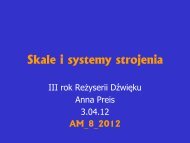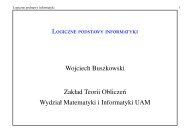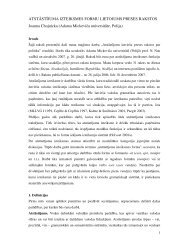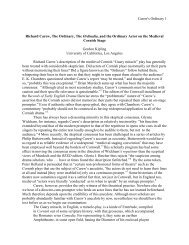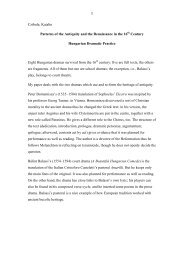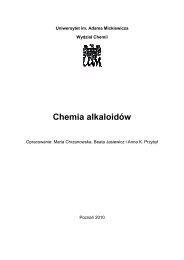Amir Weiner Getting to Know You
Amir Weiner Getting to Know You
Amir Weiner Getting to Know You
Create successful ePaper yourself
Turn your PDF publications into a flip-book with our unique Google optimized e-Paper software.
GETTING TO KNOW YOU 21<br />
Army, while also mobilizing indigenous party and Komsomol members for<br />
these positions. Headed by a Lithuanian national and veteran of the Soviet<br />
security forces, the NKVD Special Department grew exponentially. Within<br />
two months, it employed no less than 387 servicemen, including 68 military<br />
officers. 56<br />
Again, blackmail was the recruiters’ method of choice. In one such<br />
case, a rank-and-file soldier turned NKVD agent in the 262nd Regiment<br />
obtained a written pledge from a drunken major <strong>to</strong> inform on his peer<br />
officers’ political views and sentiments. When the officer, once sober, refused<br />
<strong>to</strong> keep his promise, he was threatened with arrest and deportation <strong>to</strong> Siberia.<br />
Fully aware that large portions of the information provided by informants<br />
was often of little value, especially that from and about officers, the Special<br />
Department and the republic’s NKVD widely censored servicemen’s private<br />
correspondence, which yielded information ranging from a plea <strong>to</strong> a brother<br />
<strong>to</strong> hold on <strong>to</strong> his religious faith, pledges <strong>to</strong> sustain national identity, and<br />
expressions of frustration with the silence imposed on the spread of political<br />
terror and the decline in the quality of life <strong>to</strong> characterizations of Russian<br />
commanders as “rabid dogs.” 57 Between 15 January and 5 May 1941, some<br />
3,551 letters from servicemen <strong>to</strong> their relatives and acquaintances were<br />
confiscated and used in investigations of politically suspicious personnel. In<br />
addition, the oath of allegiance <strong>to</strong> the Red Army was used <strong>to</strong> mark those who<br />
refused <strong>to</strong> swear or were suspected of such refusal. Based on this information,<br />
the men of the 29th Corps were catalogued by “degrees of contamination.” 58<br />
As elsewhere in the Soviet polity, the gathering and analysis of information<br />
worked both ways. It was used <strong>to</strong> identify real and imagined opponents of<br />
the regime and simultaneously catalogued constituencies on terms familiar <strong>to</strong><br />
the authorities, ordaining them with political identities, making them legible<br />
and workable. Information not only reflected realities. It also created them.<br />
Here, again, the comparison with the NKVD’s Nazi counterpart is<br />
telling. Many of these servicemen would soon fall in<strong>to</strong> German captivity.<br />
56 Algirdas Jakubčionis, Stasys Knezys, and Arūnas Streikus, Okupacija ir aneksija: Pirmoji<br />
sovietinė okupacija (1940–1941) (Vilnius: Margi Raštai, 2006), 534–35, 537–38; LYA f. 1771,<br />
ap. 190, b. 1, l. 26.<br />
57 LYA f. K-1, ap. 19, b. 1, ll. 39–42. These censored letters are reproduced in Okupacija ir<br />
aneksija, 343–46.<br />
58 Some 2,600 officers, noncommissioned officers, and soldiers were classified as suspicious,<br />
mostly members of prewar organizations now categorized as counterrevolutionary. Over 500<br />
were classified as potentially dangerous, including those whose families suffered in the course<br />
of Sovietization policies. Somewhat more than 100 servicemen, although not a single officer,<br />
were listed as supporters of Soviet power (Okupacija ir aneksija, 536, 538–39; LYA f. K-1, ap.<br />
19, b. 1, ll. 75–80).



